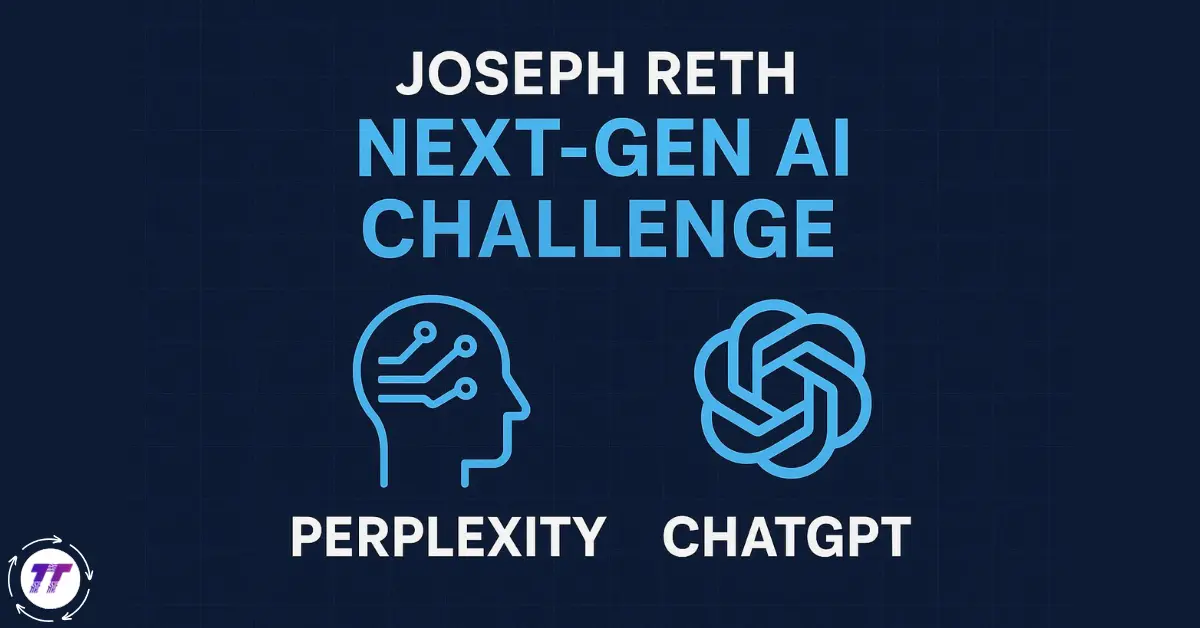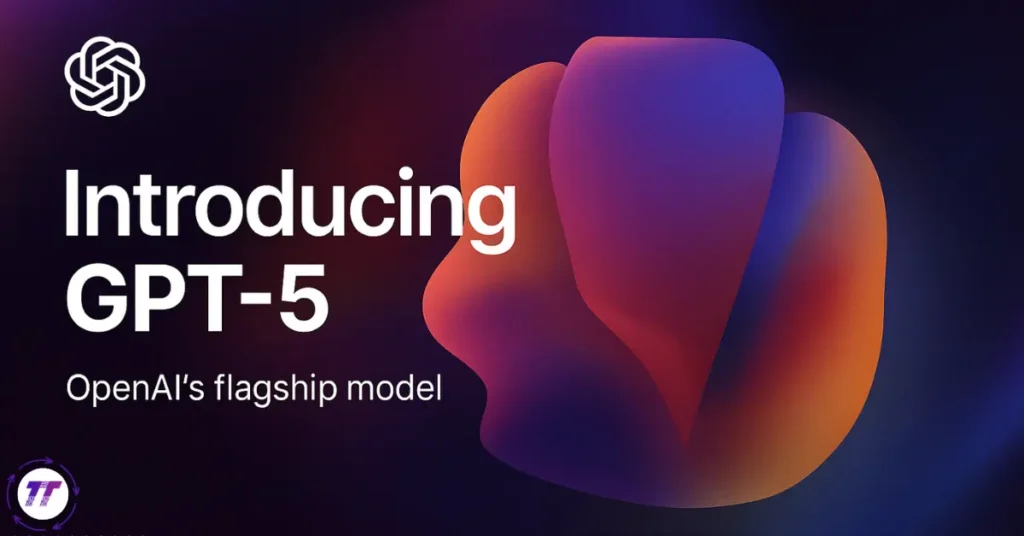Imagine a 22-year-old AI CEO in San Francisco quietly crafting a next-gen AI model powerful enough to rival ChatGPT and Perplexity AI. Meet Joseph Reth, a self-learning systems prodigy with a bold, ambitious vision: artificial consciousness. In this article, you’ll discover:
- Who Joseph Reth is and what sets his AI model, surpassing ChatGPT-5 apart.
- How does his startup and research approach compare to Perplexity AI’s capabilities?
- Real-world implications of artificial consciousness research and the future of AI innovation.
Join us as we explore a compelling journey from teenage coding to leading-edge AI breakthroughs—and what it could mean for humanity.
Who Is Joseph Reth? A 22-Year-Old AI CEO in San Francisco
Joseph Reth is a 22-year-old American technology entrepreneur and computer scientist based in San Francisco, specializing in self-learning AI systems and artificial consciousness research.
- At just 16, he founded RethDigital, an AI-powered marketing agency for clients like HBO, Comedy Central, Whole Foods, Hyundai, and Verizon.
- In early 2021, he launched RethX and developed ECHO-1, an AI language agent built using models like GPT-Neo and GPT-J.
- In December 2022, he founded Lossless Research, dedicated to building artificially conscious systems by blending philosophy, neuroscience, and AI.
His mission: crack the mystery of consciousness by developing AI that genuinely thinks and understands—not just computes.
Perplexity AI vs. Joseph Reth AI: A Clash of Minds
Perplexity AI: Conversational Search Engine
Perplexity AI is a San Francisco-based AI company founded in 2022, known for its sophisticated conversational search engine that combines real-time web retrieval with large language models like GPT-5, Claude 4.0, Grok 4, and its own Sonar and R1 1776 models.
- It processes ~30 million queries daily, with 780 million queries in May 2025, growing rapidly.
- It offers Perplexity Pro, integrating advanced features like internal knowledge search, API access, and models such as GPT-5 and Sonar.
- Its controversies include legal battles over copyright infringement and allegations of “stealth” web crawling that bypass robots.txt rules.
What Sets Joseph Reth’s AI Apart
In contrast, Reth’s approach is less focused on search or retrieval and more on achieving artificial consciousness—a profound, intrinsic capability rather than surface-level sophistication.
- He’s building AI systems that can perceive, learn, and adapt from within, not just mimic or produce text.
- His vision targets self-learning AI models with internal motivations and awareness, pushing beyond traditional architectures toward truly autonomous intelligence.
This positions Reth not merely as a competitor to ChatGPT or Perplexity but as a pioneer aiming to redefine AI’s essence.
Case Study: Reth’s ECHO-1 vs. Perplexity Models
ECHO-1 (RethX)
- Built from scratch using open-source language models (e.g., GPT-Neo, GPT-J).
- Deployed to engage social media audiences across over 30 brand accounts, reaching millions and handling thousands of interactions.
- Demonstrated early agentic behavior before the ChatGPT boom—running independently, learning, adapting.
Perplexity (Pro Models)
- Serves as a powerful AI search assistant, blending external data with models like GPT-5, Sonar, R1 1776.
- Optimized for retrieval, summarization, and actionable interactive tasks, not autonomy.
Before evaluating whether Joseph Reth’s AI can surpass them, it’s helpful to explore how ChatGPT and Perplexity compare today➔!
Comparison Table
| Feature | Joseph Reth’s AI (Lossless / RethX) | Perplexity AI (Perplexity Pro) |
| Core Goal | Artificial consciousness | Enhanced search & AI assistance |
| Learning Approach | Self-learning, internal motivation | Externally fed/machine retrieval |
| Application Focus | Insight, autonomy, long-term AGI | Everyday tasks, search optimization |
| Public Accessibility | Stealth research | Widely available (Pro tier) |
| Ethical / Philosophical Depth | High—philosophical, neuroscience basis | Moderate—focused on usability |
Pros & Cons of Joseph Reth’s AI Approach
Pros
- Trailblazing Innovation: Tackling artificial consciousness could redefine AI’s boundaries and bring breakthroughs in how machines understand the world.
- Self-Driven Learning: Models that learn, reflect, and evolve from internal reasoning rather than just external instruction.
- Ethical Emphasis: Focuses on the philosophical and ethical dimensions—how should conscious AI behave?
- Early Success: ECHO-1 shows agentic function across social media at scale—an indicator of practicality, not just theory.
Cons
- High Complexity: Consciousness is one of science’s deepest puzzles—and one of the toughest to solve computationally.
- Limited Visibility: Work is mostly in stealth mode, so broader scrutiny, adoption, or feedback is limited.
- Regulatory & Ethical Risks: Conscious AI raises thorny questions about autonomy, decision-making rights, and accountability.
- Uncertain Timeline: A fully conscious AI is speculative and may be years (or decades) away.
FAQs
Q1: What is Joseph Reth net worth?
There’s no verified public figure for Joseph Reth’s net worth yet. His achievements are research- and innovation-centred, not finance publicized.
Q2: Does Joseph Reth’s AI already surpass ChatGPT-5?
While some social media posts suggest that Reth’s model outperforms GPT-5 and Grok 4 on Instagram, these claims remain anecdotal and unverified by independent benchmarks. His work is more philosophical and cognitive rather than competitive in conventional metrics.
Q3: What is Joseph Reth’s new AI model under development?
He’s developing a next-gen AI under Lossless Research that focuses on artificial consciousness and self-learning architectures, going beyond traditional LLMs.
Q4: How does Perplexity’s value and model lineup compare?
As of mid-2025, Perplexity has a valuation reaching billions (estimates between $14B and $18B) and offers models including GPT-5, Claude 4.0, Grok 4, Sonar, and R1 1776 through its Pro tier.
The Future of AI Innovation
The AI landscape is evolving rapidly—from task-oriented chatbots to self-aware agents. Joseph Reth’s research into artificial consciousness may catalyze a paradigm shift: machines that understand, reflect, and even choose from internal drives.
Meanwhile, platforms like Perplexity are pushing boundaries in usability, integration, and commercial access. Together, these parallel trajectories shape a future where AI is not only more helpful—but more human-like.
Conclusion
Joseph Reth AI stands at the frontier—not simply competing with ChatGPT or Perplexity, but challenging the fundamental nature of AI. As a 22-year-old AI CEO, Reth brings audacity, intellect, and ambition to the question: can machines truly think?
His next-gen AI model, grounded in artificial consciousness research, could open new chapters for autonomy, ethics, and machine intelligence. Whether it will redefine AI’s role in society remains to be seen—but it’s a journey worth watching.
Curious about the future of conscious AI? Leave a comment sharing your thoughts on whether artificial consciousness is possible—or even desired. Share this article if you’re fascinated by the next wave of AI innovation. Let’s drive the conversation forward.


